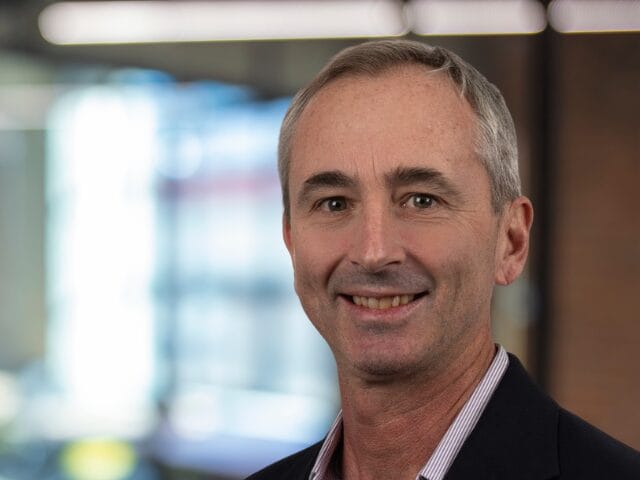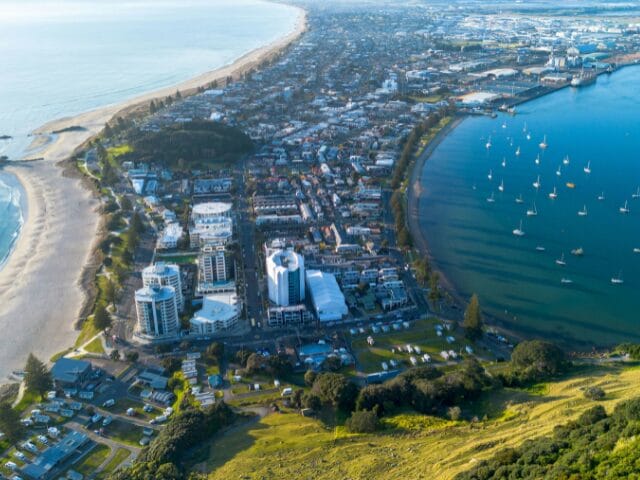
Tauranga is no longer just a quiet coastal town—it’s one of the fastest-growing urban centres in Aotearoa New Zealand. With a port that drives national logistics, fertile land supporting agriculture, and increasing demand for housing and infrastructure, Tauranga is evolving rapidly. For those of us in the geotechnical sector, this growth brings both challenge and opportunity.
Lowry Shuler is a Principal Geotechnical Consultant at Tetra Tech Coffey with extensive experience delivering ground engineering solutions for complex infrastructure, transport, and urban development projects. Known for his practical approach and technical depth, Lowry works closely with clients to manage geotechnical risks and optimise outcomes from concept design through to construction. His work spans major projects across Australia and the Asia-Pacific region, with a strong focus on collaboration, innovation, and sustainable design.
Here Lowry shares his insights into the essential role of the geosciences in creating the future of Tauranga, supporting this transformation with deep local experience, strategic partnerships and a clear focus on smart, sustainable urban development.
Understanding the Lay of the Land
Over the past decade, I’ve seen firsthand how our geotechnical team has helped unlock tricky greenfield and brownfield sites for future new communities.
Much of Tauranga’s expansion is occurring across landforms that were previously considered unsuitable for dense development. From low-lying grazing land susceptible to liquefaction and flooding, to sustainability focused intensification of the developed city centre, Maungatapu and Otumoetai terraces, each site presents uniquely challenging ground conditions.
As specialists in geotechnical services we work from concept to completion, helping clients understand subsurface conditions, identify hazards like slope instability or weak soils, and deliver practical design inputs that enable confident planning approvals.
Getting good geotechnical expertise becomes critical.
Geotechnical investigation is not a checkbox exercise. When done early and done right, it can save developers significant time and cost—while reducing risk during the construction phase. These services don’t just deliver technical data—they help developers proactively manage risk and unlock sites with confidence, especially in areas like Te Tumu and Papamoa East, where developable land is at a premium and hazards like peat settlement and seismic liquefaction must be carefully navigated.
Building the Foundations for Growth
Our team here in Tauranga have supported numerous residential growth areas, from large master planned subdivisions to small private developments. What makes us different is our commitment to supporting every tier of growth—from major infrastructure clients to individual homeowners pursuing their dream extensions.
We also collaborate directly with architects, builders, private owners, developers, and local councils, as well as local iwi, national government agencies and corporate clients. Regardless of project size or complexity, we tailor our approach to meet the needs, compliance obligations, and budget of every project
“Start with the ground – early geotechnical investigation helps identify constraints before you’ve spent time and money on concept plans.”
My observation is that while some national and global firms focus only on large-scale projects, Tetra Tech Coffey also supports homeowners and small developers, helping to maintain technical integrity at every level of development.
Designing Smarter Cities, Not Just Spreading Further
Tauranga’s rapid growth isn’t just pushing outward—it’s also driving urban intensification. Redevelopments in the city centre and infill housing projects are increasing in number and complexity. Anyday of the week, you’ll find our team working alongside councils, planners and architects by providing specialist geotechnical input on retaining walls, deep foundations, seismic assessments, and infrastructure interfacing—ensuring safe densification without compromising long-term performance.
Tauranga’s growth also demands robust infrastructure. Our team has worked closely with Tauranga City Council (TCC) and local authorities to provide geotechnical input on a range of transport service infrastructure upgrades, including peer review for construction design items on the Tauranga Northern Link (TNL), and Geotechnical services for local roading, water supply and wastewater treatment projects.
This work ensures infrastructure is built on solid ground—literally—and futureproofed for performance, safety, and resilience.
Sustainability and Resilience Built-In
As the climate changes and rainfall becomes more intense, future-focused geotechnical design must account for resilience. Whether it’s planning for sea level rise in coastal zones or designing subdivisions with smart stormwater management, our work increasingly involves collaboration with environmental scientists, civil designers and planners to create outcomes that are durable and sustainable. While our Tauranga staff are predominately geotechnical specialists, our colleagues around the globe are always eager to lend a hand in support of sustainable development, which is why among global design firms, Tetra Tech ranks #1 in Wind Power, Hydro Plants, Water Treatment, and Environmental Management.
What to Consider
Early geotechnical investigation is one of the smartest investments a developer can make. Understanding what lies beneath a site—soil composition, groundwater levels, fill materials, or potential contaminants—can significantly influence layout, structure type, and construction methods. Too often, we see concept plans or civil designs developed without input from Geotech specialists, only to be revised later once subsurface constraints are uncovered and geohazards are better understood. By engaging geotechnical experts from day one, you can de-risk your project, reduce costly redesigns, and enable more efficient, fit-for-purpose designs that align with ground realities.
Consider legacy land uses – former orchards, paddocks, and fill sites often require specialist advice.
Tauranga’s rapid development is taking place on land with diverse histories—former paddocks, kiwifruit orchards, cattle grazing fields, and even informal fill sites. These past uses can affect everything from soil stability to the presence of contaminants or subsurface voids. For example, orchard land may have residual pesticide compounds in the soil, while areas with uncontrolled fill might suffer from differential settlement if not managed correctly. These aren’t always visible from the surface, but they can become major issues if not properly assessed. Tailored geotechnical and environmental investigations ensure these risks are identified early and addressed with the right technical strategies.
Choose a partner with local knowledge – there’s no substitute for a team that knows Tauranga’s terrain and its history.
Geology isn’t uniform, and neither are planning rules, groundwater conditions, or land development histories. That’s why working with a local team—one that understands Tauranga’s complex terrain, its layered volcanic soils, and its regulatory landscape—can make all the difference. The benefit of partnering with a local firm is We know the geotechnical patterns, the constraints of specific growth areas, and the risks posed by certain land types. This insight allows us to navigate both technical and planning challenges more effectively, giving our clients clarity and confidence.
“Design for the long term– with changing weather patterns and population pressures, Geotech must enable both growth and resilience.”
As Tauranga grows, so too do the pressures on land, infrastructure, and communities. Add to that the increasing unpredictability of weather events—heavier rainfall, rising water tables, and coastal vulnerability—and the importance of resilient design becomes clear. Geotechnical engineering today is not just about making sites buildable; it’s about enabling developments that will stand the test of time. That includes considering stormwater infiltration, erosion control, slope stability, and the impact of long-term settlement. Sustainable growth means thinking decades ahead, and our geotechnical input helps clients do just that.
Collaboration is key
To deliver real value, we work closely with councils, iwi, developers, and communities. Through these partnerships, we ensure our designs reflect local values, community expectations, and real-world risk profiles. As geotechnical consultants, it’s our role to balance the technical and the human—to make sure designs are not only robust, but also and community-minded. That’s why we strive to maintain open dialogue with council teams throughout the design process—to prevent delays, resolve misunderstandings, and deliver better outcomes.
Building Resilience into Regional Growth
Looking back Tauranga’s experience offers lessons for other fast-growing regions in Aotearoa. The lessons I have learned and are sharing with our clients and partners moving forward include:
- Invest in infrastructure and CBD redevelopment or inherit sprawl and congestion.
- Integrate sustainable concepts into geotechnical thinking during early planning, not just pre-construction stages.
- Understand that resilience—against floods, liquefaction, and slope instability—is a foundation, not a feature.
I’m so proud of the work our team are playing in Tauranga’s evolution—from quiet port town to one of New Zealand’s most dynamic regions. Our local geotechnical team combines decades of experience with the backing of Tetra Tech’s global engineering network, helping clients make informed decisions that support the Tauranga of tomorrow.
If you’re planning a development or infrastructure project in the Bay of Plenty, we’d love to talk.
Connect with Lowry at [email protected]
